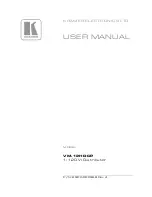
13
S
For trimming or scalping, use less than full
throttle to increase line life and decrease
head wear, especially:
S
During light duty cutting.
S
Near objects around which the line can
wrap such as small posts, trees or fence
wire.
S
For mowing or sweeping, use full throttle for
a good clean job.
TRIMMING
-- Hold the bottom of the trimmer
head about 3 inches (8 cm) above the ground
and at an angle. Allow only the tip of the line to
make contact. Do not force trimmer line into
work area.
Trimming
3 inches (8 cm)
above ground
SCALPING
-- The scalping technique removes
unwanted vegetation down to the ground. Hold
the bottom of the trimmer head about 3 inches
(8 cm) above the ground and at an angle. Allow
the tip of the line to strike the ground around
trees, posts, monuments, etc. This technique in-
creases line wear.
Scalping
MOWING
-- Your trimmer is ideal for mowing
in places conventional lawn mowers cannot
reach. In the mowing position, keep the line
parallel to the ground. Avoid pressing the
head into the ground as this can scalp the
ground and damage the tool.
Mowing
SWEEPING
-- The fanning action of the rotat-
ing line can be used to blow away loose debris
from an area. Keep the line parallel to and
above the area surface and swing the tool
from side to side.
Sweeping
OPERATING INSTRUCTIONS FOR
USE WITH WEED BLADE
S
Blade Thrust
is a reaction that only occurs
when using a bladed unit. This reaction can
cause serious injury such as amputation.
Carefully study this section. It is important that
you understand what causes blade thrust,
how you can reduce the chance of its
occurring, and how you can remain in control
of unit if blade thrust occurs.
S
WHAT CAUSES BLADE THRUST
--
Blade
Thrust
can occur when the spinning blade
contacts an object that it does not cut. This
contact causes the blade to stop for an instant
and then suddenly move or “thrust” away
from the object that was hit. The “thrusting”
reaction can be violent enough to cause the
operator to be propelled in any direction and
lose control of the unit. The uncontrolled unit
can cause serious injury if the blade contacts
the operator or others.
S
WHEN BLADE THRUST OCCURS
--
Blade Thrust
can occur without warning if
the blade snags, stalls, or binds. This is
more likely to occur in areas where it is
difficult to see the material being cut. By
using the unit properly, the occurrence of
blade thrust will be reduced and the
operator will be less likely to lose control.
S
Cut only grass, weeds, and woody brush up
to 1/2 inch (1 cm) in diameter with the weed
blade. Do not let the blade contact material
it cannot cut such as stumps, rocks,
fences, metal, etc., or clusters of hard,
woody brush having a diameter greater
than 1/2 inch (1 cm).
S
Keep the blade sharp. A dull blade is more
likely to snag and thrust.
S
Cut only at full throttle.
The blade will
have maximum cutting power and is less
likely to bind or stall.
S
“Feed” the blade deliberately and not too
rapidly. The blade can thrust away if it is fed
too rapidly.
S
Cut only from your left to your right. Cutting on
right side of the shield will throw debris away
from the operator.
S
Use the shoulder strap and keep a firm grip
on the unit with both hands. A properly








































